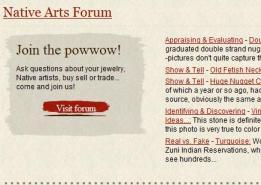Who made my jewelry? This might be a question we hear a dozen times a day, and the person who asks expects us to know. Sometimes we just don’t know and that is when the fun begins. It seems like the number of artists in this area is endless, so many talented people make gorgeous pieces of jewelry here. Gallup mainly sells Navajo, Zuni, and Hopi jewelry and that is what we sell here at the Trading Post.
So we just don’t know – Step One
Turn the piece of jewelry over and look for a hallmark or other markings. Many times we will recognize the hallmark, and if we don’t we have resources in the store that we refer to frequently.
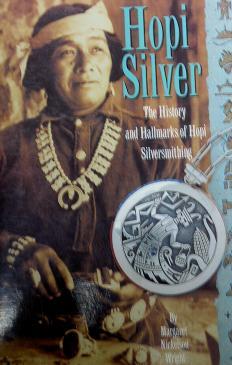
Excellent for Hopi Hallmarks
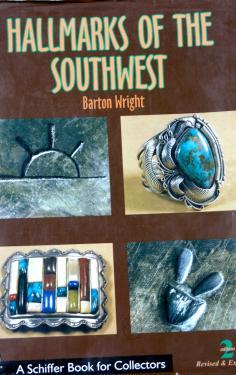
Great overall source for Hallmarks, has some mistakes but definitely a must have
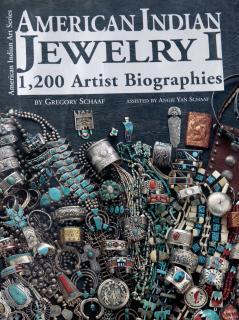
Really works well if you have the artist name and want to see images of style of work

The internet, of course make sure the source makes sense, but where else
can you find so much information
Step Two
General class the style. Big silver and large stones, good chance it is Navajo. Small stones, cluster, or inlay and you have a reason to believe the work is Zuni. The piece is all silver, overlay, and the bottom oxidized part has a very fine texture and you just might have a piece of Hopi work. Of course, you have Navajo, Zuni, & Hopi artists that don’t make the traditional style of pieces their Tribe is known for, but the number is definitely a minority.
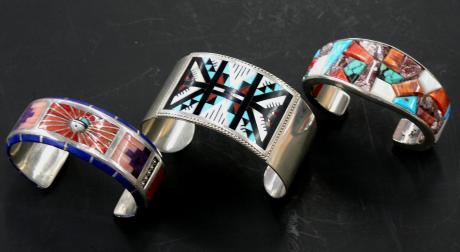
Navajo artists make inlay jewelry, too. However, it usually looks a little different, like on heavier silver or a rough cobble stone style of inlay. The center piece is Zuni, the other two are Navajo made.
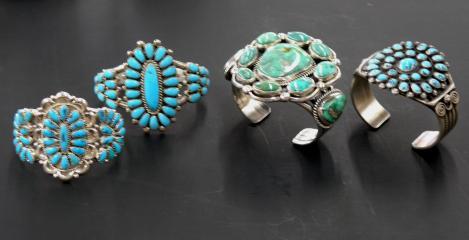
Zuni & Navajo cluster work. The heavier silver is a sign that it is Navajo made. However the two cluster pieces on the left represent a Navajo & Zuni artist.
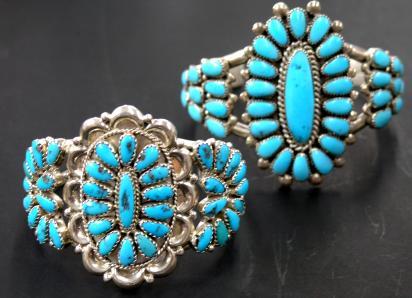
Navajo on the left, Zuni on the right. A very subtle clue is the stone work, notice the Zuni work matches color and size a little better. Also, the Navajo artist just can’t help but add more silver to the work, heavy around the stones.
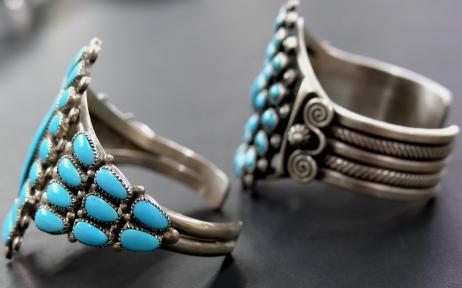
Notice the big difference in silver, a Navajo piece will almost always be heavier silver construction.
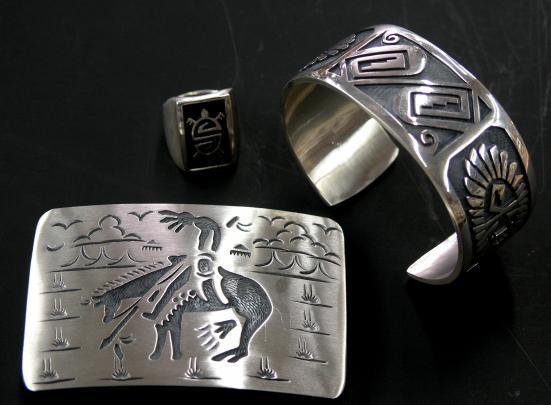
Hopi and Navajo all silver pieces. The buckle is Navajo made, notice the design, the End of the Trail, just don’t see that often if ever depicted in Hopi silver. Plus, notice the shine, the Navajo piece has a satin finish, the two Hopi an nice high shine.
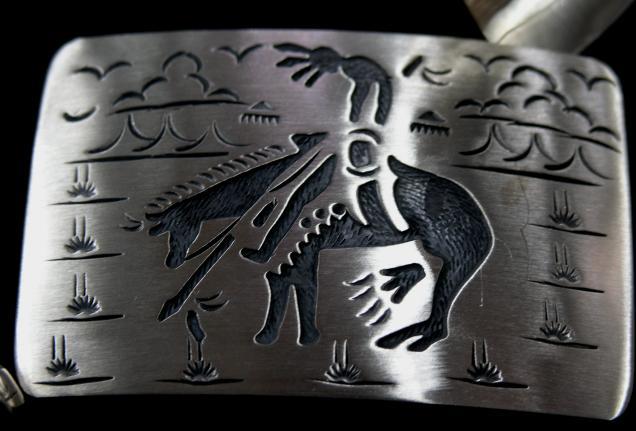
Another Navajo made or not Hopi made clue, the etched oxidized background is just not as fine as you find on Hopi work.

Zuni and Navajo turquoise cluster pins. Very similar, but do show slight differences. The Zuni pride themselves on stone work and they do not like to show lots of matrix, the Navajo piece shows lots of matrix. Also, remember the silver, the Zuni piece (on the left) has that nice open design, the Navajo piece has the heavier silver look.
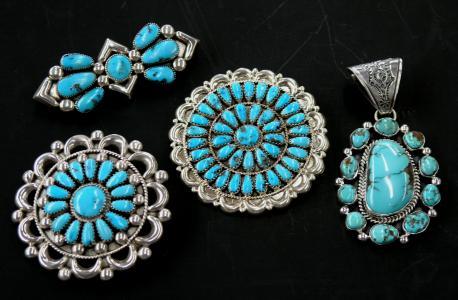
Zuni left, Navajo right. The far right pendant is a dead giveaway Navajo made piece, big and chunky.
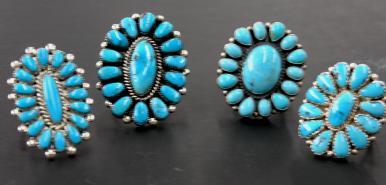
Cluster rings can be very difficult, because you just can’t get a bunch of stones or silver into the piece. The two on the left are Zuni, the stones show a little less matrix. The middle right ring is the easiest to identify because the stones are just a style you find in Navajo, usually purchased already cabbed where the other pieces have been shaped by the artist.
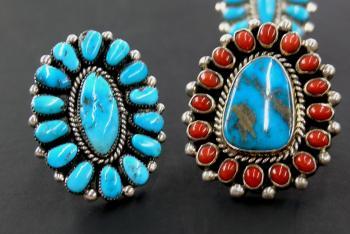
The free form shaped stone on the left is usually a Navajo made giveaway. Plus, coral and turquoise is found made by both Navajo & Zuni artists, but definitely favored to the Navajo.
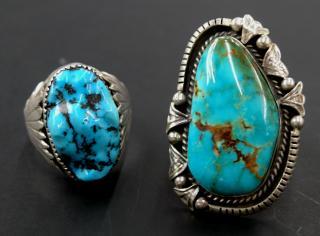
Zuni left, Navajo right. The Navajo piece is easy to identify, big, heavy, and a nice free form shaped stone.
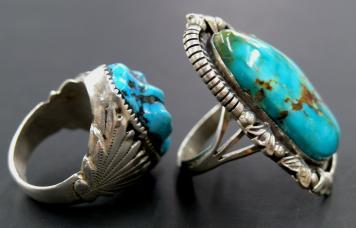
The Zuni piece has a cast shank with a silver leaf design on the sides, plus the stone is cut by the artist, not something you find in local supply stores, but still difficult to determine, luckily this one is hallmarked by Robert & Bernice Leekya. Typical Navajo style split ring shank.
Step Three
Hallmarks, just like the style of jewelry the markings on the backside can help to identify. Generally, Zuni & Navajo artists will use initials for their artist mark, exp. Roger Skeets will use an R and S stamp on the back of his work. Hopi artists will usually use a symbol, something like a snowflake or sun for example.
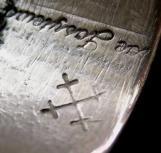
Hopi hallmark, a symbol
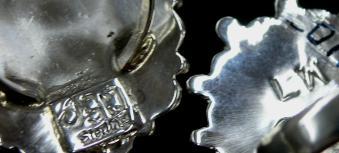
Navajo & Zuni hallmarks, initials
Step Four
Get some help. That is exactly why we started the forum, join today.
